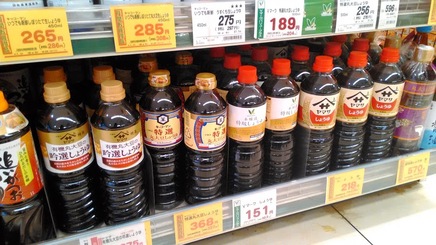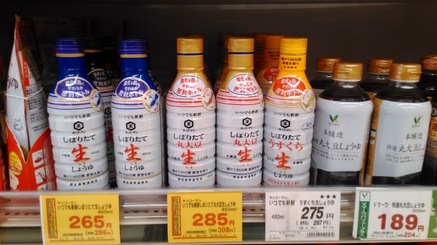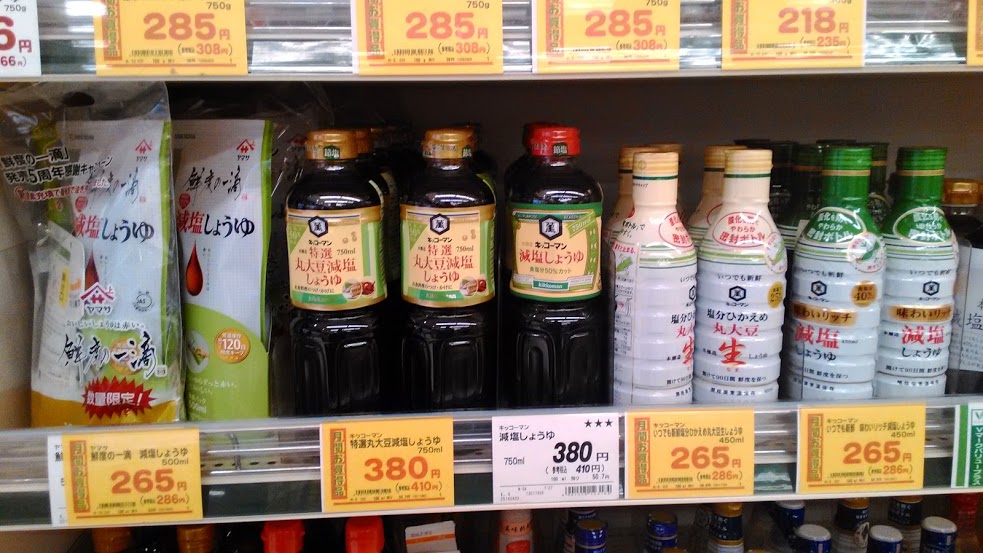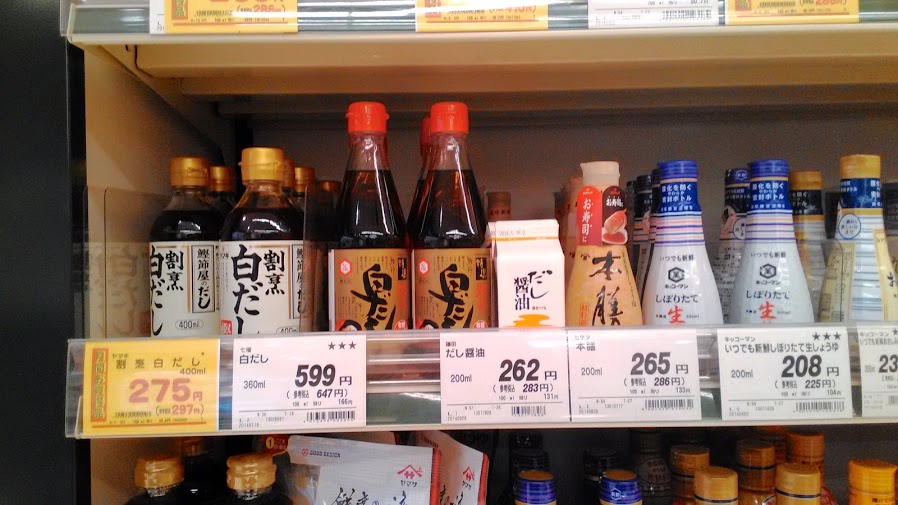Soy Sauce
Soy Sauce is one of the most important ingredients in Japanese Cooking. Together with dashi (soup stock), It is the base of many Japanese dishes.
If you go to a supermarket, you can a variety of Soy Sauce in the shelf but in Tokyo, majority them would be the Dark Soy Sauce. If you are not going to be using soy sauce regularly, get the smaller size as they start to oxidize once the package is opened.(Although some packages are designed to prevent this) Once it's opened, it's best you store it in the refrigerator
According to JAS (Japan Agricultural Standard) it can be categorized in the following:
Other Soy Sauces you may see on the shelf are:
If you go to a supermarket, you can a variety of Soy Sauce in the shelf but in Tokyo, majority them would be the Dark Soy Sauce. If you are not going to be using soy sauce regularly, get the smaller size as they start to oxidize once the package is opened.(Although some packages are designed to prevent this) Once it's opened, it's best you store it in the refrigerator
According to JAS (Japan Agricultural Standard) it can be categorized in the following:
- Koikuchi Shoyu (濃口醤油 or こいくちしょうゆ)- Dark/Thick Soy Sauce - 80% of the Total Soy Sauce produced in Japan Falls into this category. If your recipe calls for soy sauce, this is the one you should choose. Salt content is approx. 16%. Most soy sauces sold in Tokyo and the Kanto Area fall into this category.
- Usukuchi Shoyu (薄口醤油 or うすくちしょうゆ)- Light/Thin Soy Sauce - A light colored soy sauce that is used for dishes where you do not want to color it brown. It is used heavily in the west regions such as in Udon soup in Osaka and Kyoto. Despite its color, It actually has about 2% more salt content than Dark Soy Sauce.
- Tamari Shoyu (たまり醤油)- Extra Thick Soy Sauce - Wheat free soy sauce. It is made only from soy beans and it is thick and rich in flavor. Usually used for teriyaki sauches, basting senbei and such.
- Saishikomi Shoyu (再仕込み醤油 or さいしこみしょうゆ)- Twice Brewed Soy Sauce.- Very thick and expensive, used mainly as table top seasoning. Usually used as a dipping sauce.
- Shiro Shoyu (白しょうゆ)- White Soy Sauce - In contrast with Tamari Shoyu, this uses mainly wheat with very little soy beans. It has a rather transparent color and used commonly in the Kansai area for dishes which need to keep its original color.
Other Soy Sauces you may see on the shelf are:
- Gen-en Shoyu (減塩醤油 or げんえんしょうゆ)- Reduced Salt Soy Sauce - This soy sauce has 50% less salt content than regular soy sauce. It is used in place of normal soy sauce for people with a special diet.
- Ki-Shouyu (actually pronounced "Kijoyu") (生醤油or生しょうゆ) - Pure Soy Sauce which is not heated. More fragrant.
- Dashi Shoyu (出汁醤油 or だししょうゆ)- Pre-seasoned Soy Sauce
- Ponzu Shoyu (ポン酢醤油)- Citrus Vinegared Soy Sauce
- Kokusan Marudaizu( 国産丸大豆) - Using domestic whole soy beans instead of compressed soybeans. I personally try to get domestic soy beans as they are not GMO.
- Yuki Daizu( 有機大豆) - Using Organic Soy Beans





